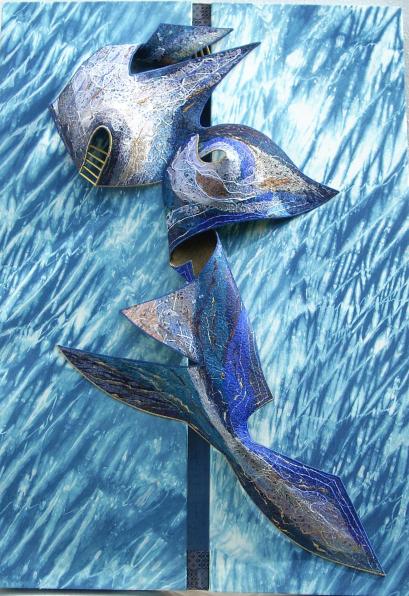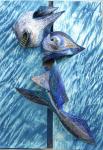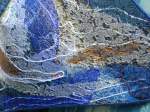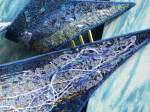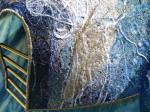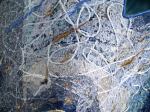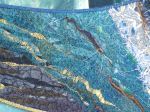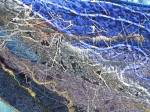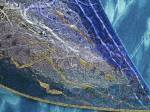Tonight I am giving you a post about how I produce the base fabrics that I use to make my jewellery.
Before creating my jewellery pieces, I first produce the basic material to be cut out and stitched. Here are some photos of a new piece of material made recently:
First a suitably coloured background material is bonded onto a layer of Vylene stiffening material.
Small pieces of fabric, ribbon, threads, etc are placed onto the base layer, over some bonding powder.
A complex multi-colour pattern of tiny elements is gradually built up.
A layer of organza is placed on top and then ironed to bond it to the layer below.
Freehand machine stitching over the entire sheet fixes everything together.
The fabric is lightly treated with a heat gun to expose some more of the colours beneath.
Another layer of small pieces and another layer of organza are added. the surface is then stitched using a variety of pattern embroidery stitches.
Stitching over the now complex layered fabric. With experience, great depth and subtlety can be achieved.
Final treatment with a heat gun brings out the depth of the material.
The completed base fabric ready to be cut up and stitched into jewellery pieces.



















